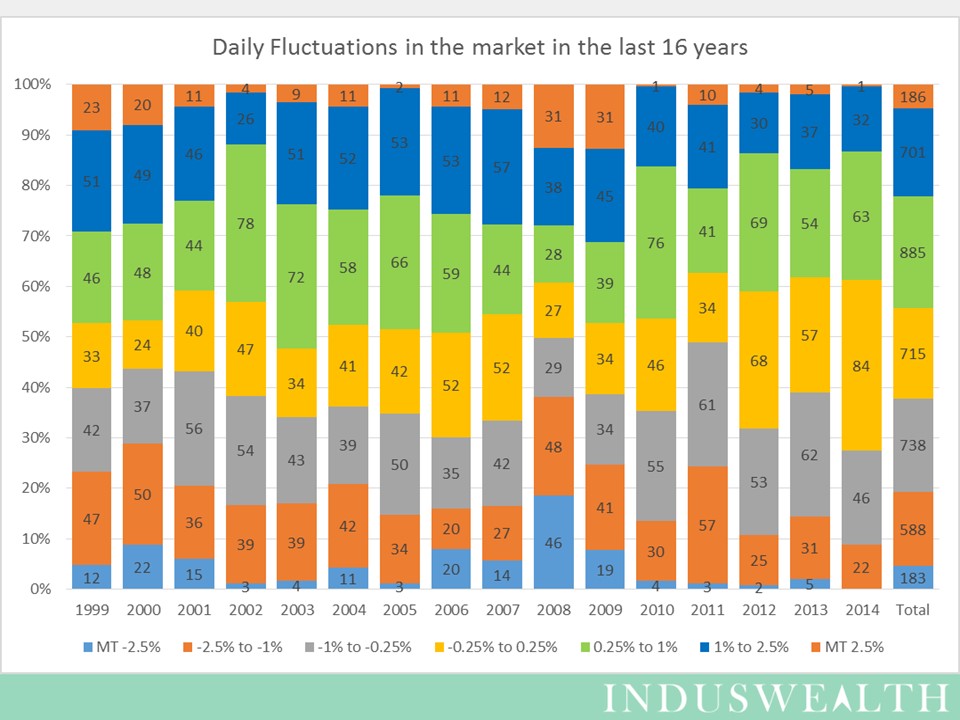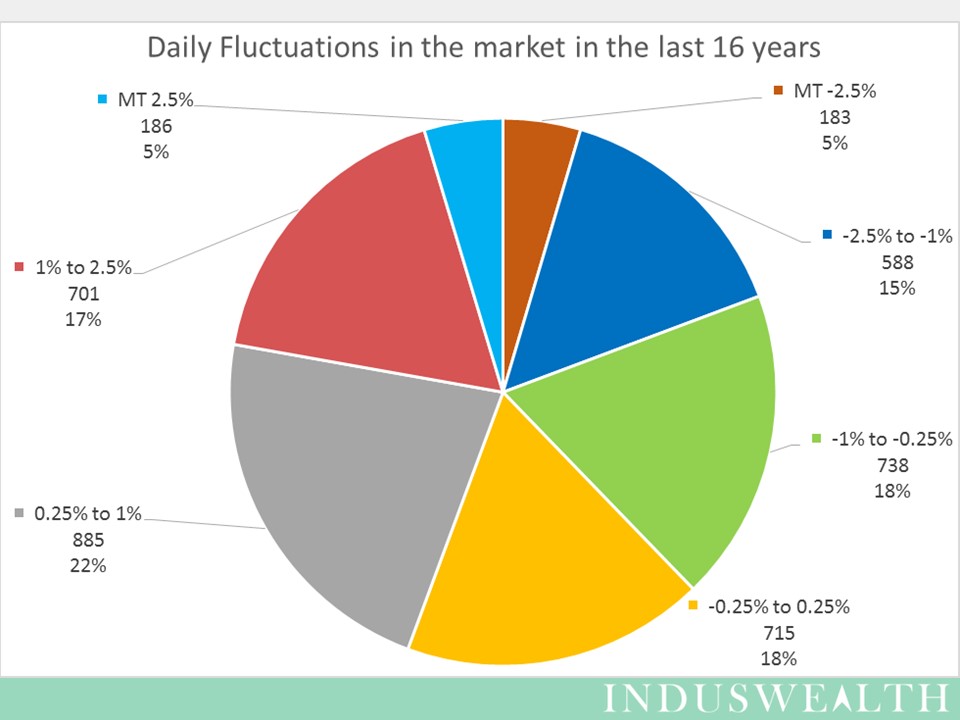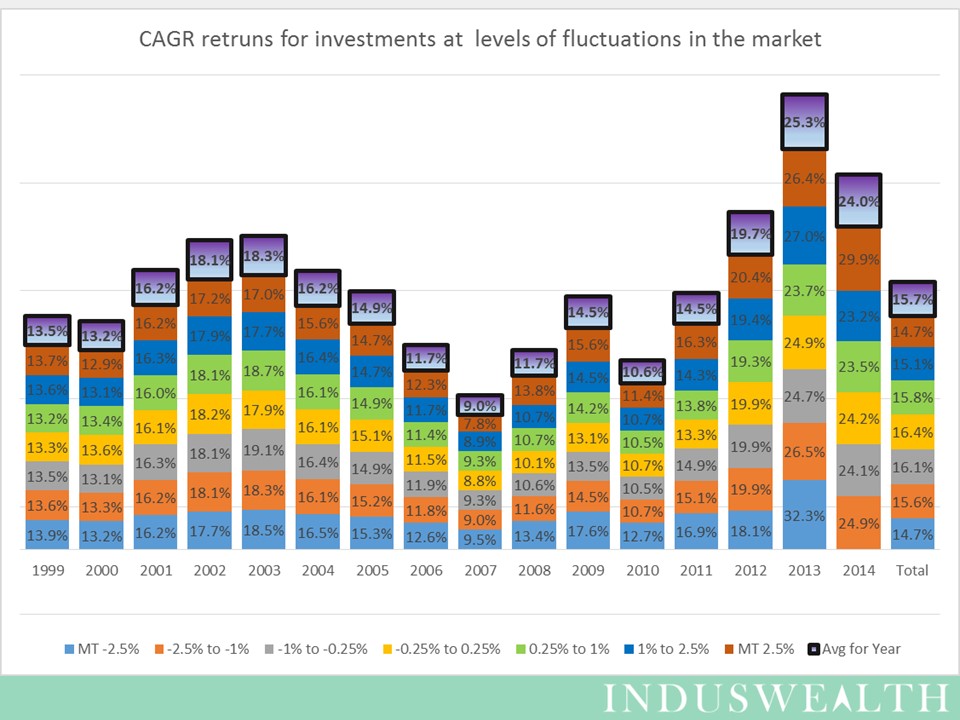Download Tamil version of this article published in Vikatan
Markets fluctuate – that is the nature of the markets. As Warren Buffett says “market in the short run is a voting machine and in the long run is a weighing machine”. Short term fluctuations are to be expected. Now that we are going through some choppy markets, we thought it would be best to let data talk about its impact in the past and to help device a strategy that would be best for long term investors.
We looked at daily returns for the last 16 years (1999 to 2014) and classified each day into one of the seven categories.
- Markets lost more than 2.5% (MT -2.5%)
- Markets lost 1% to 2.5% (-2.5% to -1%)
- Markets lost 0.25% to 1% (-0.25% to -1%)
- Markets fluctuate between -0.25% to 0.25% (-0.25% to 0.25%)
- Markets gained 0.25% to 1% (0.25% to 1%)
- Markets gained 1% to 2.5% (2.5% to 1%)
- Markets gained more than 2.5% (MT 2.5%)
There about 250 trading days a year, so we have analysed about 4,000 trading days.
If we look at the chart below (first column) we can see that in 1999 there were 12 days when the market lost more than 2.5% and 23 days when it gained more than 2.5%. Over the last 16 years (last column) we can see that there were 588 days (14.7% of time) where the market lost 1% to 2.5% and 701 days (17.5% of time) where it gained 1% to 2.5%.
The pie chart below shows that 5% of the fluctuations are represented by market gains of over 2.5% and 5% by market losses of over 2.5%. 58% of the fluctuations are between -1% and 1%.
In 1999 if one had invested on all the 12 days when the market lost more than 2.5% one would have realized a return of 13.9% CAGR (yearly return for last 16 years). If one had invested in for the 23 days on when the market gained more than 2.5%, one would have realized a return of 13.7% CAGR. If one had invested steadily throughout the year in 1999 one would have realized a return of 13.5% CAGR.
Similarly over the last 16 years if one had invested on all the 183 days when the market lost over 2.5% they would have realized a return of 14.7% CAGR. If one had invested on all the 186 days when the market gained over 2.5% one would have realized a return of 14.7% CAGR. If one had invested steadily over the last 16 years one would have realized a return of 15.7%.
In summary one can conclude
- Markets fluctuate –
- Fluctuations more than 2.5% up or down in a day have occurred 10% of the time
- 60% of the time markets fluctuate between -1% and 1%
- Returns form investments made during extreme fluctuations are not much different from the ones that are made regularly
- One can say that market timing may not increase the returns for an individual significantly.
- One is better off investing at a regular pace as the average returns for an investor who is ready to buy and hold are very good (much better than the bank fixed deposit rate).
Please remember – Markets fluctuate but investors shouldn’t
Happy investing..


